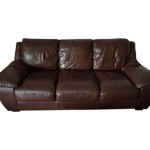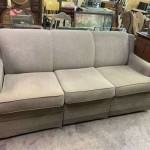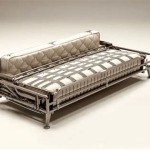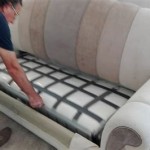Average 3 Seater Sofa Dimensions: A Comprehensive Guide
The 3-seater sofa is a ubiquitous piece of furniture found in living rooms across the globe. Its popularity stems from its versatility, offering ample seating for multiple individuals while remaining compact enough to fit within a variety of room sizes. Understanding the average dimensions of a 3-seater sofa is crucial for anyone looking to purchase one, ensuring it comfortably accommodates its intended occupants and harmonizes with the existing spatial layout. This article provides a comprehensive overview of these dimensions, exploring the typical ranges and the factors that influence them.
When discussing sofa dimensions, it’s important to consider several key measurements. These include overall length, depth, height, seat height, and seat depth. All of these measurements contribute to the overall comfort and functionality of the sofa.
Overall Length: The Key to Room Compatibility
The overall length, often referred to as width, is the dimension that dictates how much horizontal space the sofa occupies. For a 3-seater sofa, the average length typically falls between 75 inches (190 cm) and 90 inches (230 cm). However, this range can vary depending on the design and style of the sofa.
Smaller 3-seater sofas, often designed for apartments or smaller living rooms, can measure closer to 75 inches. These sofas prioritize space-saving while still offering adequate seating for three adults. Conversely, larger 3-seater sofas, often found in larger living rooms or family rooms, can extend to 90 inches or even slightly beyond. These sofas emphasize comfort and can accommodate larger individuals or provide more sprawling space.
Variations in armrest design significantly contribute to the overall length. Slim, modern armrests will minimize the overall length, while rolled or oversized armrests can add several inches to the total width. Before purchasing a sofa, carefully measure the available space in the room and account for any doorways or walkways that might be obstructed. It is generally recommended to leave at least 30 inches of clearance around the sofa for comfortable passage.
Consider the existing furniture in the room. A large sofa may overwhelm a small space, while a smaller sofa might appear insignificant in a larger room. Consider the placement of other furniture pieces, such as coffee tables, side tables, and entertainment centers, when determining the appropriate sofa length.
Depth and Height: Factors Influencing Comfort
The depth of a sofa, measured from the front of the seat to the back of the frame, influences the level of support and comfort it provides. The average depth for a 3-seater sofa generally ranges from 30 inches (76 cm) to 40 inches (102 cm). Deeper sofas tend to offer a more relaxed, lounge-like experience, while shallower sofas provide a more upright seating position.
The height of a sofa, measured from the floor to the top of the backrest, also plays a role in comfort and aesthetics. Average sofa heights typically range from 30 inches (76 cm) to 36 inches (91 cm). Higher backrests provide greater support for the head and neck, while lower backrests can contribute to a more modern or minimalist aesthetic. The height of the armrests should also be considered, as they should ideally allow for comfortable arm placement.
The ideal depth and height will depend on personal preferences and the intended use of the sofa. If the sofa is primarily used for watching television or relaxing, a deeper and taller sofa may be preferable. If the sofa is primarily used for socializing or formal gatherings, a shallower and shorter sofa may be more appropriate.
Consider the height of other furniture in the room when selecting a sofa. Maintaining proportional heights between the sofa, coffee table, and other seating options will create a more visually harmonious and balanced space.
Seat Height and Seat Depth: Ergonomics and Functionality
Seat height and seat depth are critical dimensions that directly impact the ergonomic comfort of the sofa. Seat height, measured from the floor to the top of the seat cushion, typically falls between 17 inches (43 cm) and 20 inches (51 cm) for a 3-seater sofa. Seat depth, measured from the front of the seat cushion to the backrest, usually ranges from 20 inches (51 cm) to 25 inches (64 cm).
A seat height within the average range allows most individuals to sit comfortably with their feet flat on the floor. A seat height that is too low can make it difficult to stand up, while a seat height that is too high can cause discomfort in the legs. The ideal seat height will depend on the height of the individual using the sofa.
Seat depth influences how far the user can sit back into the sofa. A deeper seat allows for a more relaxed, reclined position, while a shallower seat promotes a more upright posture. The ideal seat depth is subjective and depends on personal preferences.
Consider the cushion material when evaluating seat height and depth. Soft cushions will compress more than firm cushions, which can affect the overall seating experience. It is advisable to physically test the sofa, if possible, to ensure that the seat height and depth are comfortable.
The seat height and depth should also be considered in relation to the overall depth of the sofa. A deeper sofa will typically require a deeper seat depth to maintain proper proportions. The design of the backrest can also influence the perceived seat depth.
Beyond these core dimensions, other factors can influence the overall suitability of a 3-seater sofa. These include the style of the sofa, the type of upholstery, and the construction quality. Sofas are available in a wide range of styles, from traditional to modern, and the style should complement the overall aesthetic of the room.
Upholstery options range from fabric to leather, each offering different levels of durability, comfort, and maintenance requirements. Fabric sofas are generally more affordable and offer a wider range of colors and patterns, while leather sofas are more durable and easier to clean. The construction quality of the sofa is also important, as a well-constructed sofa will be more durable and comfortable over the long term.
The use of high-quality frame materials, such as hardwood, and sturdy spring systems will contribute to the longevity of the sofa. Inspect the stitching and seams to ensure that they are strong and well-executed. Consider the weight capacity of the sofa, especially if it will be used by multiple individuals or larger individuals.
When selecting a 3-seater sofa, carefully consider all of these factors to ensure that it meets your needs and preferences. Measure the available space in your room and consider the existing furniture and décor. Test the sofa for comfort and support, and inspect the construction quality to ensure that it is durable and well-made. By taking the time to carefully evaluate your options, you can select a 3-seater sofa that will provide years of comfortable and stylish seating.
Furthermore, the increasing popularity of modular sofas adds another layer of complexity to dimension considerations. Modular sofas consist of individual units that can be arranged in various configurations, offering greater flexibility in terms of layout and size. When considering a modular 3-seater sofa, pay close attention to the dimensions of each individual module and how they combine to form the desired seating arrangement. The overall dimensions of a modular 3-seater sofa can vary significantly depending on the number and size of the modules.
Another emerging trend is the incorporation of built-in features, such as reclining mechanisms, USB charging ports, and storage compartments, into 3-seater sofas. These features can add convenience and functionality, but they can also impact the overall dimensions of the sofa. Reclining mechanisms, for example, will increase the depth of the sofa when fully reclined. Storage compartments may add to the height or depth of the sofa base. Be sure to account for these additional dimensions when planning the layout of your room.
When browsing online retailers for a 3-seater sofa, carefully review the product specifications to ensure that the dimensions are accurately listed. Pay attention to customer reviews, as they often provide valuable insights into the actual size and comfort of the sofa. If possible, visit a physical store to see and test the sofa in person before making a purchase. This will allow you to get a better sense of the size, comfort, and quality of the sofa.
Finally, consider the long-term maintenance requirements of the sofa. Different upholstery materials require different cleaning and care procedures. Fabric sofas may require regular vacuuming and spot cleaning, while leather sofas may require periodic conditioning. Choose an upholstery material that is easy to maintain and that will withstand the wear and tear of everyday use. By taking the time to properly care for your 3-seater sofa, you can extend its lifespan and maintain its appearance for years to come.

Sofa Dimensions For 2 3 4 5 6 Person Couches Diagrams Included Home Stratosphere

Romane Three Seater Sofa Solid Wood Fabuliv

Buy Entawak Sofa Blue Colour Three Seater At Best In Pune

Sofa Fabric Estimator Calculator How Much To Cover A

Valencia Artisan Wide Three Seats Leather Sofa Cognac Color

Sofa Dimensions 101 Measuring For Your Perfect

Sofa Dimensions A Ultimate Guide Homenish Layout Furniture Standard
Your Guide To Measuring For Sofa

Apollo Sofa Set Urban Ladder

Sofa Size Calculator








